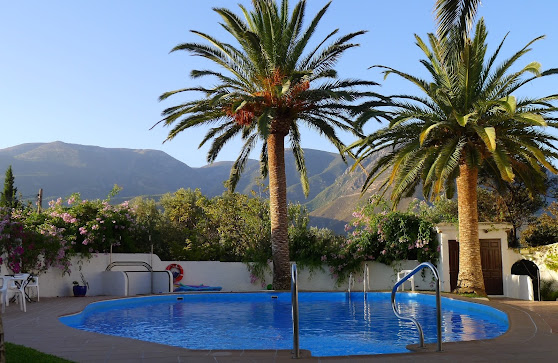Adjusting to our "new normal"- but what about mild post-lockdown anxiety?
It's a glorious, sunny day by the sea and from my window it is hard to believe that we were all in lockdown ten days ago. Life here on a sunny, but windy mid-week day is a relief because the crowds have not come. The beach looks quieter, cyclists and walkers seem to be weaving around each other amicably. I am enjoying seeing the kite-surfers emerge again and show off their skills as they make incredible turns and leaps. I might have actually found a moment of calm post-lockdown.
On days like this when I see people happily enjoying the beach and having picnics galore, I feel alone in having some post-lockdown fears. But apparently not. Post-lockdown anxiety is a thing now for a number of people. I've read articles on this topic written in Australia, New Zealand, UK and USA. And this is reassuring to me who feels such mixed emotions. On the one hand, it feels exciting to venture just a little further from my lockdown routine. And at the same time, each step out of my safe house feels fraught with niggling worries.
Maybe the problem is our "fight/flight" system? For ten weeks, most of us were ensconced in our homes where this was deemed the safest place you could be. My daily walks happened far away from others along peaceful wide paths. And even then, a person approaching would trigger a jolt of adrenaline, knowing I need to keep 2 metres with the "keep safe" mantra in my head on repeat.
Now, suddenly the rules have changed. We can go out, have picnics and see one friend at a social distance. But my "alert system" doesn't understand that things have changed. Ten weeks has been long enough to sow the seeds that people equals a potential problem. Being at home equals safe. And now I'm trying to convince my fight/flight system that maybe things are better now.
Except with coronavirus this is hard to do. It hasn't totally gone, so I can't reassure myself that the pandemic is over. How do we tell ourselves it is safer than it was but we still have to "stay alert" as our government tells us. Does this mean still feeling a jolt of anxiety each time we see another human or leave the house? Our alert systems tend to work more in black and white, safe or unsafe. No wonder this all feels so difficult to navigate.
The fight/flight system is activated by the amygdala in the brain, in response to a perceived threat. Originally designed to keep our ancestors safe from a predator, the same activation can occur even when we think about coronavirus. Now we are starting to leave our virus-free homes to venture out into the world, how do we calm down our amygdala? I would like to see people without a low level fear of catching coronavirus.
Fortunately we have evolved with frontal lobes in our brain which are part of the cerebral cortex. This is where we can think, reason, make decisions and process our emotions. Even if we have some level of alertness going on, we can override the amygdala response by engaging the cerebral cortex. So to venture back out into the world, we need to power up these frontal lobes. Here are three ways that we can do this:
 Being mindful of our responses in the present moment helps to engage the frontal lobes of the brain. Notice how you are feeling, and be reassuring to yourself. It is okay to feel uncertain given the exceptional times we are in. Taking some conscious deeper, slower breaths can help calm a moment of tension. I'm still keeping generous social distance when out on my walk, but I'm trying to breathe in a more relaxed way when passing people.
Being mindful of our responses in the present moment helps to engage the frontal lobes of the brain. Notice how you are feeling, and be reassuring to yourself. It is okay to feel uncertain given the exceptional times we are in. Taking some conscious deeper, slower breaths can help calm a moment of tension. I'm still keeping generous social distance when out on my walk, but I'm trying to breathe in a more relaxed way when passing people.
On days like this when I see people happily enjoying the beach and having picnics galore, I feel alone in having some post-lockdown fears. But apparently not. Post-lockdown anxiety is a thing now for a number of people. I've read articles on this topic written in Australia, New Zealand, UK and USA. And this is reassuring to me who feels such mixed emotions. On the one hand, it feels exciting to venture just a little further from my lockdown routine. And at the same time, each step out of my safe house feels fraught with niggling worries.
Maybe the problem is our "fight/flight" system? For ten weeks, most of us were ensconced in our homes where this was deemed the safest place you could be. My daily walks happened far away from others along peaceful wide paths. And even then, a person approaching would trigger a jolt of adrenaline, knowing I need to keep 2 metres with the "keep safe" mantra in my head on repeat.
Now, suddenly the rules have changed. We can go out, have picnics and see one friend at a social distance. But my "alert system" doesn't understand that things have changed. Ten weeks has been long enough to sow the seeds that people equals a potential problem. Being at home equals safe. And now I'm trying to convince my fight/flight system that maybe things are better now.
Except with coronavirus this is hard to do. It hasn't totally gone, so I can't reassure myself that the pandemic is over. How do we tell ourselves it is safer than it was but we still have to "stay alert" as our government tells us. Does this mean still feeling a jolt of anxiety each time we see another human or leave the house? Our alert systems tend to work more in black and white, safe or unsafe. No wonder this all feels so difficult to navigate.
The fight/flight system is activated by the amygdala in the brain, in response to a perceived threat. Originally designed to keep our ancestors safe from a predator, the same activation can occur even when we think about coronavirus. Now we are starting to leave our virus-free homes to venture out into the world, how do we calm down our amygdala? I would like to see people without a low level fear of catching coronavirus.
Fortunately we have evolved with frontal lobes in our brain which are part of the cerebral cortex. This is where we can think, reason, make decisions and process our emotions. Even if we have some level of alertness going on, we can override the amygdala response by engaging the cerebral cortex. So to venture back out into the world, we need to power up these frontal lobes. Here are three ways that we can do this:
1) Engaging the rational, decision making part of our frontal lobes.
I check most days to see the current infection rate in my area, which feels reassuring to know it is lessening. We can "risk assess" a social situation to ensure things feel safe. This might include wearing a face mask and using hand sanitiser. We can also make our own decisions within the government guidelines to what feels right for ourselves/household. Listen to a range of advice, especially the expert scientists and medical professionals. If it feels too soon (and some scientists are agreeing) we can take our time. As there is still some risk (although significantly less), caution maybe the best policy.2) Using breathing and mindfulness to help calm the stress response.
 Being mindful of our responses in the present moment helps to engage the frontal lobes of the brain. Notice how you are feeling, and be reassuring to yourself. It is okay to feel uncertain given the exceptional times we are in. Taking some conscious deeper, slower breaths can help calm a moment of tension. I'm still keeping generous social distance when out on my walk, but I'm trying to breathe in a more relaxed way when passing people.
Being mindful of our responses in the present moment helps to engage the frontal lobes of the brain. Notice how you are feeling, and be reassuring to yourself. It is okay to feel uncertain given the exceptional times we are in. Taking some conscious deeper, slower breaths can help calm a moment of tension. I'm still keeping generous social distance when out on my walk, but I'm trying to breathe in a more relaxed way when passing people.










Comments
Post a Comment